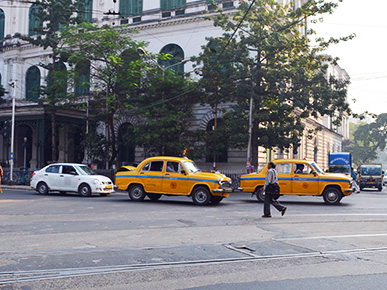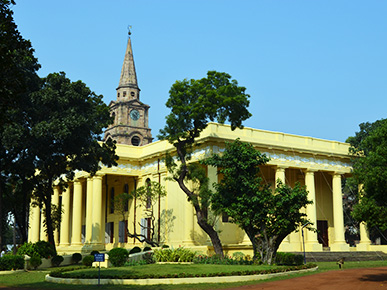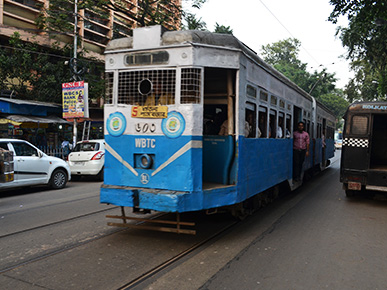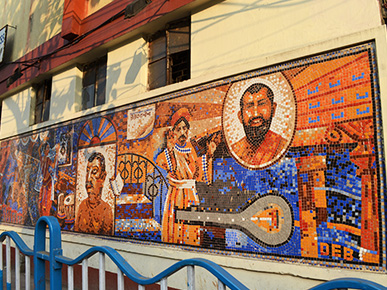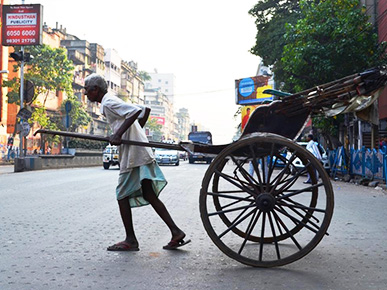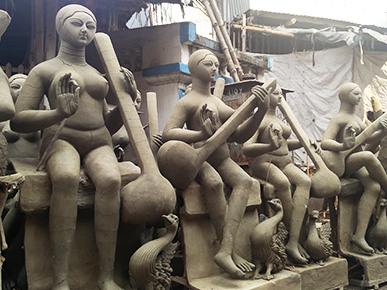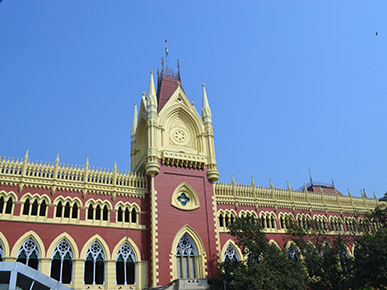Exploring Kolkata
Kolkata is located far away from the main grid of the tourist circuits of India, therefore, not many know about its sightseeing places! In the recent years, Northeast India has seen an increase in the tourist traffic moving towards it, now it has become all the more important to explore West Bengal since it acts as a convenient base for the tourists to enter or exit the Eastern and the North Eastern parts of India. My exploratory trip aimed at gaining knowledge about the tourism products existing in India’s largest Metropolitan City in the East – i.e. Kolkata.
Considering this, I decided to start my exploratory trip with a full day sightseeing tour of Kolkata, escorted by an experienced Department of Tourism (DOT) licensed English speaking Guide.
Before describing the flow of the tour, let me give you an overview of the city. Kolkata is basically divided into three distinct parts – Central, North and South.
Central Kolkata is the heart of the city situated along the west banks of Hooghly River. It is actually the ‘Colonial Calcutta’ with some of the finest British monuments and mansions located here, such as the Victoria Memorial, Dalhousie Square (now known as BBD Bagh) and Esplanade Mansions etc. The main streets here are Chowringhee Road, Park Street, Lindsey Street, Shakespeare Sarani etc. The British were able to rule over India for almost 200 years from here. Because of the presence of the British in this part, Central Kolkata was also called the ‘White Town’.
Northern Kolkata is as old as Central Kolkata but is completely different. It is characterised by 19 century dilapidated buildings, overpopulated slums, crowded bazaars and narrow alleyways. This area also has old houses belonging to the Zamindars (Landlords) and other rich Bengalis who used to trade with the British. Northern Kolkata has been successful in preserving the traditional Bengali culture in the city. There are interesting markets in this area, such as the famous Posta and Burrabazar wholesale markets and College Street Book Market, where you can find even the ‘out of print’ books on sale. The Calcutta Medical College, the Presidency College and Calcutta University are located on the College Street. Other areas of Northern Kolkata include Shyambazar, Hatibagan, Maniktala, Sovabazar, Sonagachi, Kumartuli and Jorasanko.
Southern Kolkata was developed after the British left India in 1947. This area is less congested and is more modern as compared to the other parts of the city. There are apartment blocks, green patches and large bungalows in South Kolkata. It has posh localities such as Ballygunge, Alipore, New Alipore, Lansdowne, Bhowanipore, Kalighat, Dhakuria, Tollygunge, Naktala, Lake Gardens, Golf Green, Jadavpur, Picnic Garden, Topsia, Santoshpur and Kasba.
Now let me describe to you the full day sightseeing tour of Kolkata done by me. My Guide Anup Saha started the tour from College Street where the Presidency College is located. After taking a walk through the Book Market, we went to have a look at the intellectual crowd sitting inside the Indian Coffee House. Thereafter, we headed towards Shantinath Jain Temple to admire the silver and mirror work, both inside and outside the temple structure. Our next stop was Kumartuli, the Potters’ Colony where we saw the craftsmen working on clay idols. Since I was keen on having a look at the house of Nobel Laureate Rabindranath Tagore’s House called Jorasanko Thakurbadi which is a fabulous museum in Kolkata, we headed towards it before moving further. Our next stop was the Marble Palace. We went in to have a look at the priceless artefacts exhibited inside the huge halls. Later we drove towards the Mullick Ghat Flower Market on the banks of River Hooghly with a view of the famous Howrah Bridge in the background. Anup, my Guide, told me that the tour of Kolkata is never considered complete till one doesn’t go around the Howrah Bridge across the river therefore, that was what we did next.
With the tour of North Kolkata complete, Anup now took me to see the sites in Central Kolkata. We started by having a look at St. Andrew’s Church from outside. Crossing the main road, we came near the ‘Writers Building’ and entered the well-maintained BBD Bagh. Here, while taking a stroll, Anup pointed out the various buildings constructed by the British during their colonial rule over India, like the Calcutta GPO building (built in 1864); Central Telegraph Office (built in 1876) and Standard Insurance Building (built in 1896). From here we drove to St. John’s Church and went inside to have a look at the historic chair of Lord Warren Hastings, the first Governor General of British India. In the church itself, Anup showed a lavish painting of ‘The Last Supper’ by Johann Zoffany, a founder member of London's Royal Academy of Arts, who had come to India in 1783. Later we walked to the tomb of Job Charnock – the man who is said to have ‘discovered’ Calcutta in 1690. At that time it was a cluster of French, Dutch and Portuguese trading posts, strung together by three villages on the banks of the Hooghly: Sutanati, Kalikata, Gobindapur. Charnock finally settled at the last village, establishing a trading post that evolved into British India's capital city. Continuing the tour and now driving towards South Kolkata, we drove past Raj Bhawan, the erstwhile residence of the British Viceroy and the grand Victoria Memorial.
In South Kolkata we visited the famous Indian Freedom Fighter, Netaji Subhash Chandra Bose’s House which is now re-christened as Netaji Bhawan, a museum about his contribution to the Indian freedom struggle. The last site to be visited was the Kalighat Temple, located on the old course of the River Hooghly. The name Kolkata is said to have been derived from the word Kalighat. The river over a period of time has moved away from the temple. The temple is now on the banks of a small canal called Adi Ganga which connects to the Hooghly.
I realized at the end of the tour that today’s Kolkata is a unique Cosmopolitan city with a number of communities converging. Apart from Bengalis, here you will find Armenians, Portuguese, Dutch, Danes, French, English, Parsis, Marwaris, Jains, Muslims, Biharis, and so many more. That’s the city of joy!
